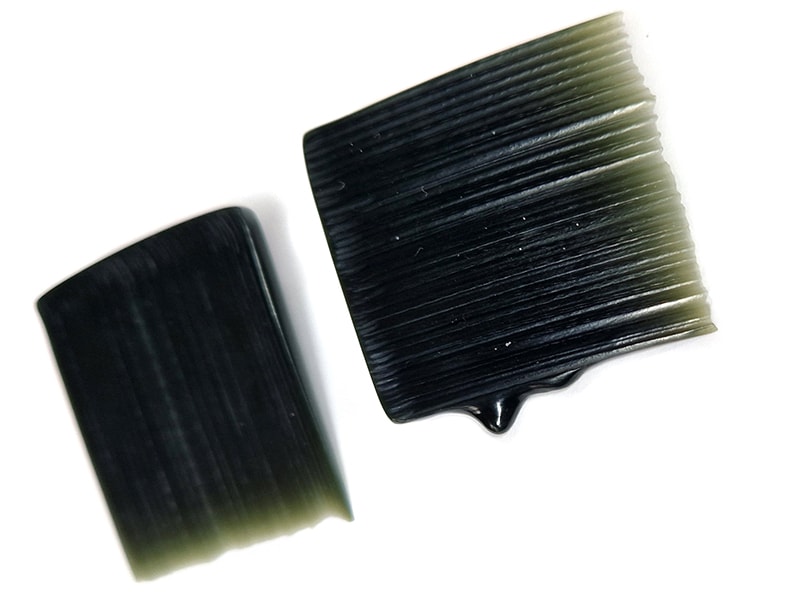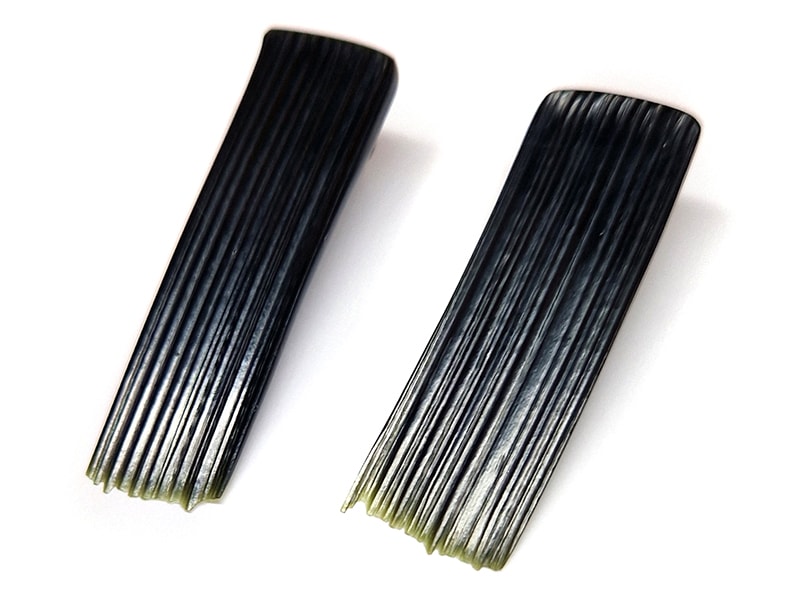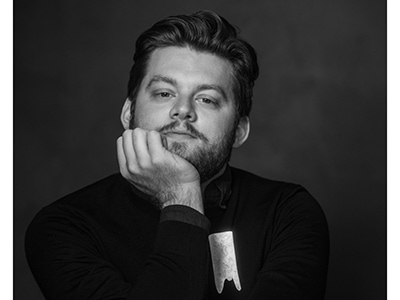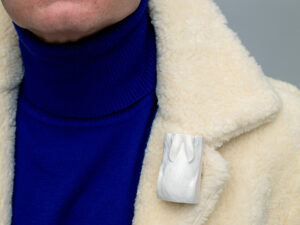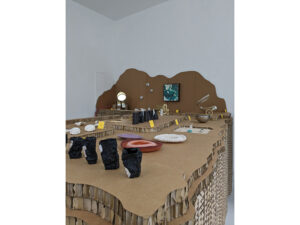Soulmates: An Exhibition in Honor of Kadri Mälk
February 28–March 3, 2024
Galerie Biro, Munich, Germany

“Love me or leave me or let me be lonely.”[1] These words, taken from an interview I conducted with Kadri Mälk, echoed in my mind as I walked Soulmates: An Exhibition in Honor of Kadri Mälk, hosted by Galerie Biró. The tone in the space was ceremonial—it felt only appropriate to speak in a whisper. I sensed Mälk in every corner and in every choice.
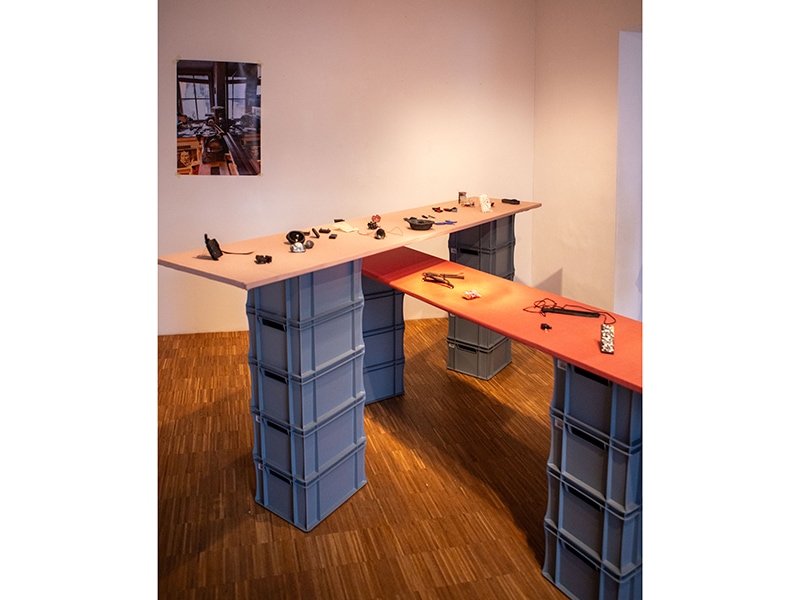
Many pieces of jewelry were placed on two central tables, one intersecting the other and falling underneath it. Coral-colored linen surfaces were propped up with plastic packing containers. The ready-made nature was unsurprising and quite common for Schmuck shows, which bring many “maker friends” together on the table. What made this stand out from the crowd, however, were the choices to let Mälk’s life, and therefore her, inhabit the space.
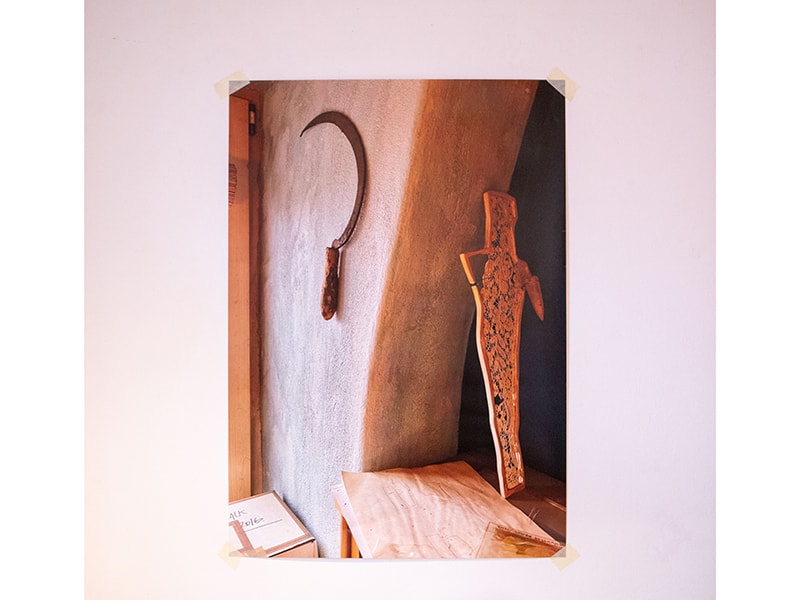
At the entrance, Mälk’s coat, scarf, and shoes were set aside, as if it were her studio door I was walking into. On the wall adjacent, a large photo of Mälk’s studio. In this image I saw the rooftops of old Tallinn set behind the ephemera of the late artist’s workspace. I turned to the next room, an arched portal framing a wand by Urmas Lüüs hung beside a tall table with two full bowls atop them—food possibly left for mourners.
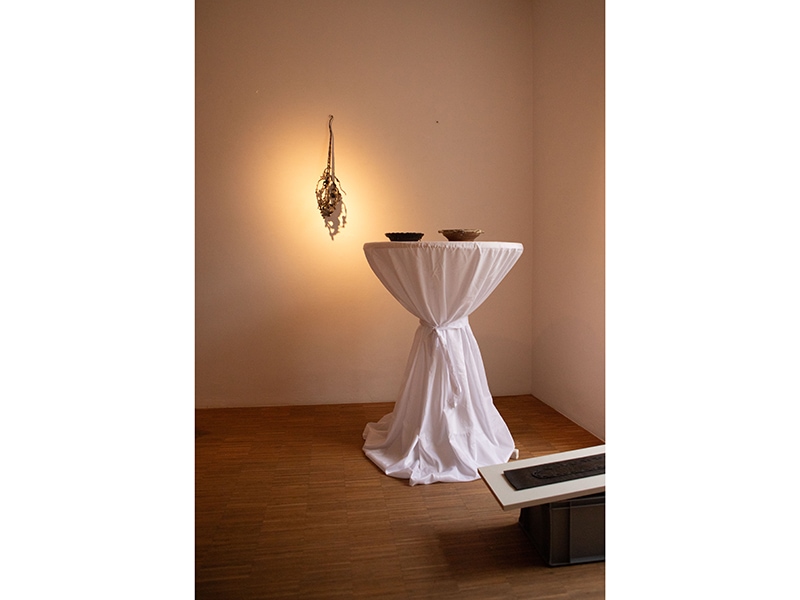
These choices were not defaults. For those close to Mälk, such details were intentional. They illustrated her affinity for care, for people, and for the spirit. These choices helped frame a sensibility of the artist’s spiritualism—something she often imparted onto her students.
Lüüs’s wand, Mälgu Malakas (The Wand of Mälk) exemplifies this sensibility. A wand, uncommon as an art or jewelry object, sits well in the Estonian tradition led by Mälk. A single branch of forged iron flows down the wall into tendrils that protect a stone core that the artist notes is “a fossil from Kadri.” The wand should conflict with my modern technological sensibilities—it doesn’t. I am left to wonder about the nature of such objects, take their magical properties seriously, and note the making of a wand as a valid artistic endeavor. The piece asks for my soul first and my mind second, as the gauges by which to understand it.
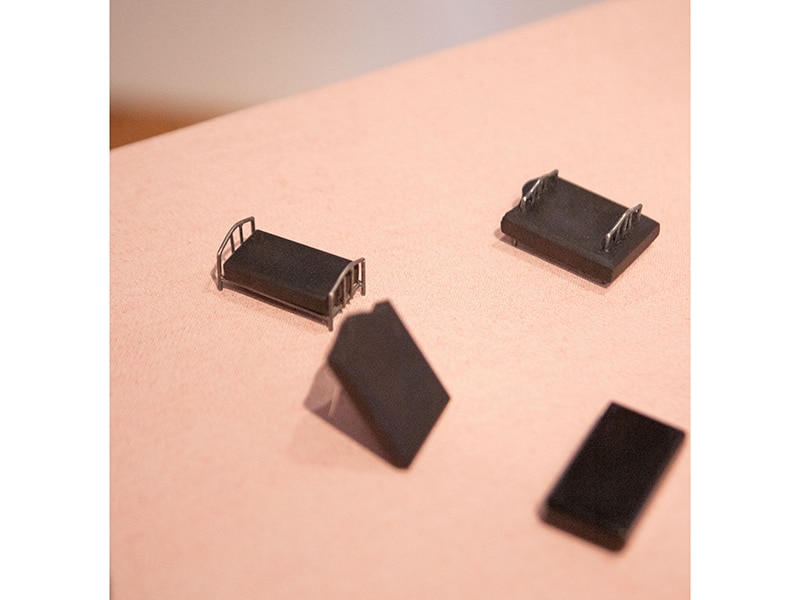
Mälk’s conceptual sensibility continues across the tables in the first room. Two artists, Tanel Veenre and Karen Pontoppidan, make this immediately apparent. Veenre, Mälk’s closest colleague and friend, presented a number of pieces, Bed for a Sleeping Soul, Pillow for a Sleeping Soul III, and Pillow for a Sleeping Soul IV, to name a few. These pieces take the form of miniatures, leaving me to question the size of the soul, and where it rests after it leaves the body.
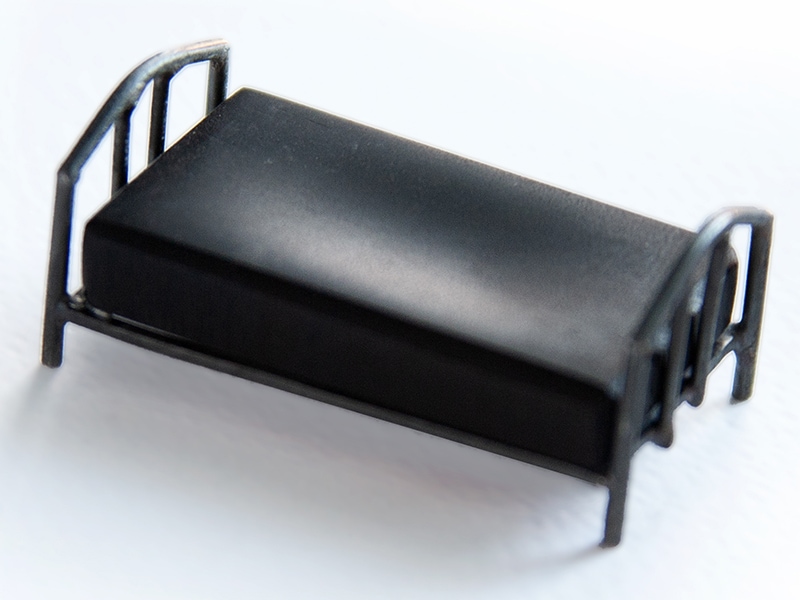
Ideas of a body and soul arose again in a pewter bell from Karen Pontoppidan titled KNELL#Kadri. As pewter is incredibly soft, I assume that this bell would sound with a muted thump. What’s more, I imagine each strike of the body-shaped clapper would change the bell’s shape, life impacting it, life deforming it, its tolls getting softer and softer. Both Veenre and Pontoppidan centralize “mourning” in their jewelry without too much melancholy—a challenging task given the circumstance. They let the viewer feel, rather than see, what questions pain and loss can bring while steering away from usual tropes of Victorian morning jewelry, which sadly, and ironically, do the opposite.
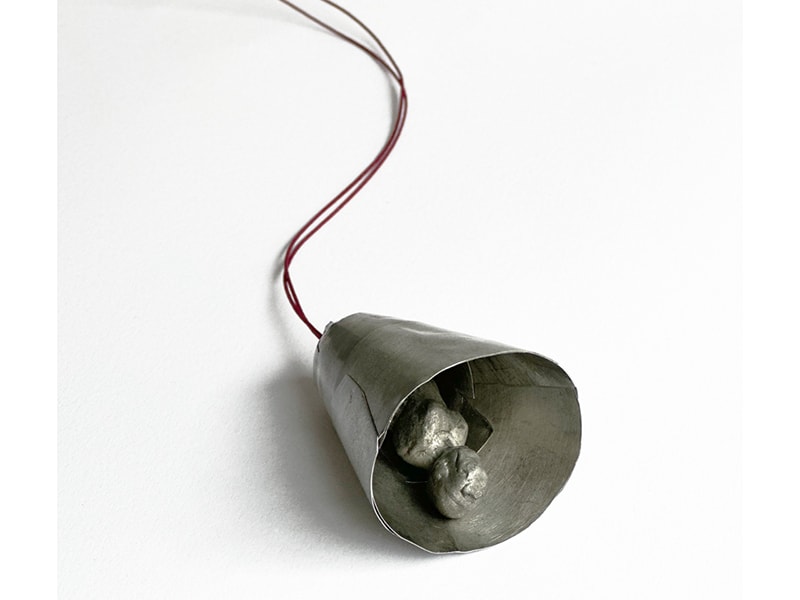
I wasn’t surprised to see a lack of color in the jewelry for Soulmates. Artists choosing to use black, red, and gray was an obvious nod to Mälk’s oeuvre. I was surprised, however, by the inclusion of the piece Let Me Paint You Blue, by Julia Maria Künnap. A masterpiece, it was carved from lapis to look as though brushstrokes of blue paint were dashed across one’s chest and neck when worn.
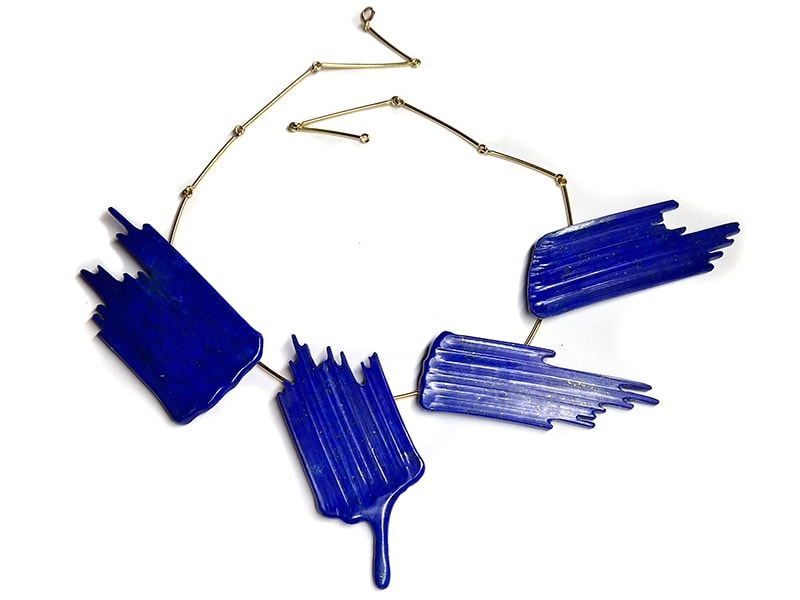
The necklace was presented alongside two pairs of earrings also by the artist and made from black jade, You Want It Darker and You Want It Darker II, which of course sat comfortably with other dark works. I wondered whether this blue stranger belonged here. Was it intentional? Having interviewed Künnap in 2012, I know the impacts Mälk’s teaching had on her. This strength in mentorship is seen in a letter penned for Mälk by Künnap for this exhibition’s occasion:
You Want It Darker
You always wanted it darker, didn’t you, Kadri? You had these Australian black jades lying in your drawer for years. You must have loved this material, I am sure, and you probably adored the words “black jade,” which sound almost like “black shade.” There is something safe in darkness, you knew it. We may remain in the shadows: we can see, but we cannot be seen. By the way, Kadri, did you know that we have tiny crystals in our ears to help us keep balance? You always surrounded yourself with crystals to find balance, and you kept saying: when you don’t know where to go, go inside yourself.
In this letter we see Mälk push her students to find, grow, and nurture their voices, even in the shadows. The expectation that each student learns to trust their voice, noted in the line “when you don’t … go inside yourself.” It makes the inclusion of the necklace Let Me Paint You Blue imperative, even if it didn’t fit the overall ”dark” aesthetic. In this decision, Künnap pays homage to her mentor and shows how Mälk’s legacy will live on in her friends, students, and colleagues.
I left Soulmates thinking that maybe Kadri Mälk was still with us. Her presence, her belongings, and her threads of influence, woven through each artist’s piece, left me touched. I could nearly hear her voice in the exhibition, her laugh as she enjoyed seeing her friends one last time. I confided in a colleague after seeing the exhibition. “Odd,” I said, “I felt as though I just got to say goodbye.”
We welcome your comments on our publishing, and will publish letters that engage with our articles in a thoughtful and polite manner. Please submit letters to the editor electronically; do so here.
© 2024 Art Jewelry Forum. All rights reserved. Content may not be reproduced in whole or in part without permission. For reprint permission, contact info (at) artjewelryforum (dot) org
[1] Aaron Decker, Kadri Mälk, https://artjewelryforum.org/interviews/kadri-ma%C2%A4lk/.
